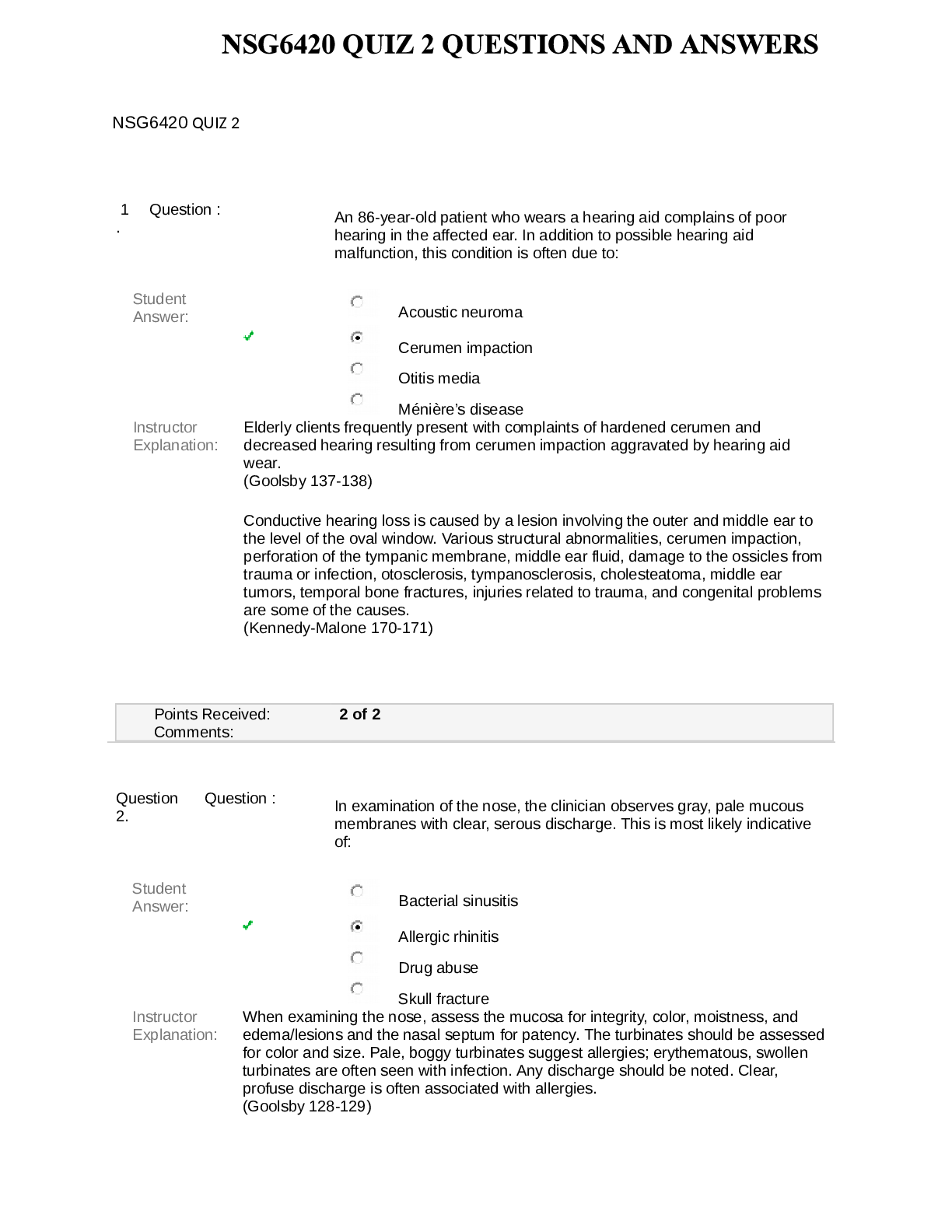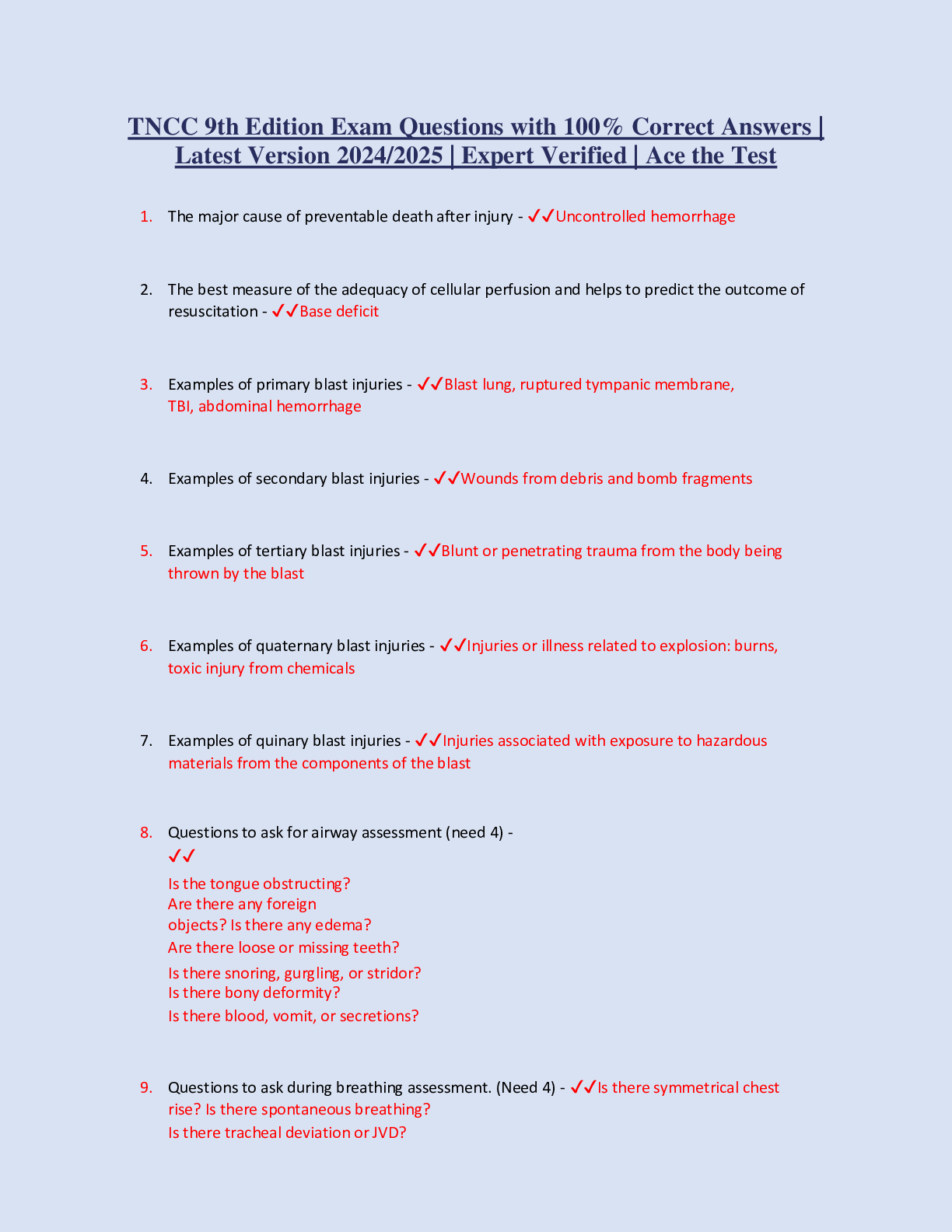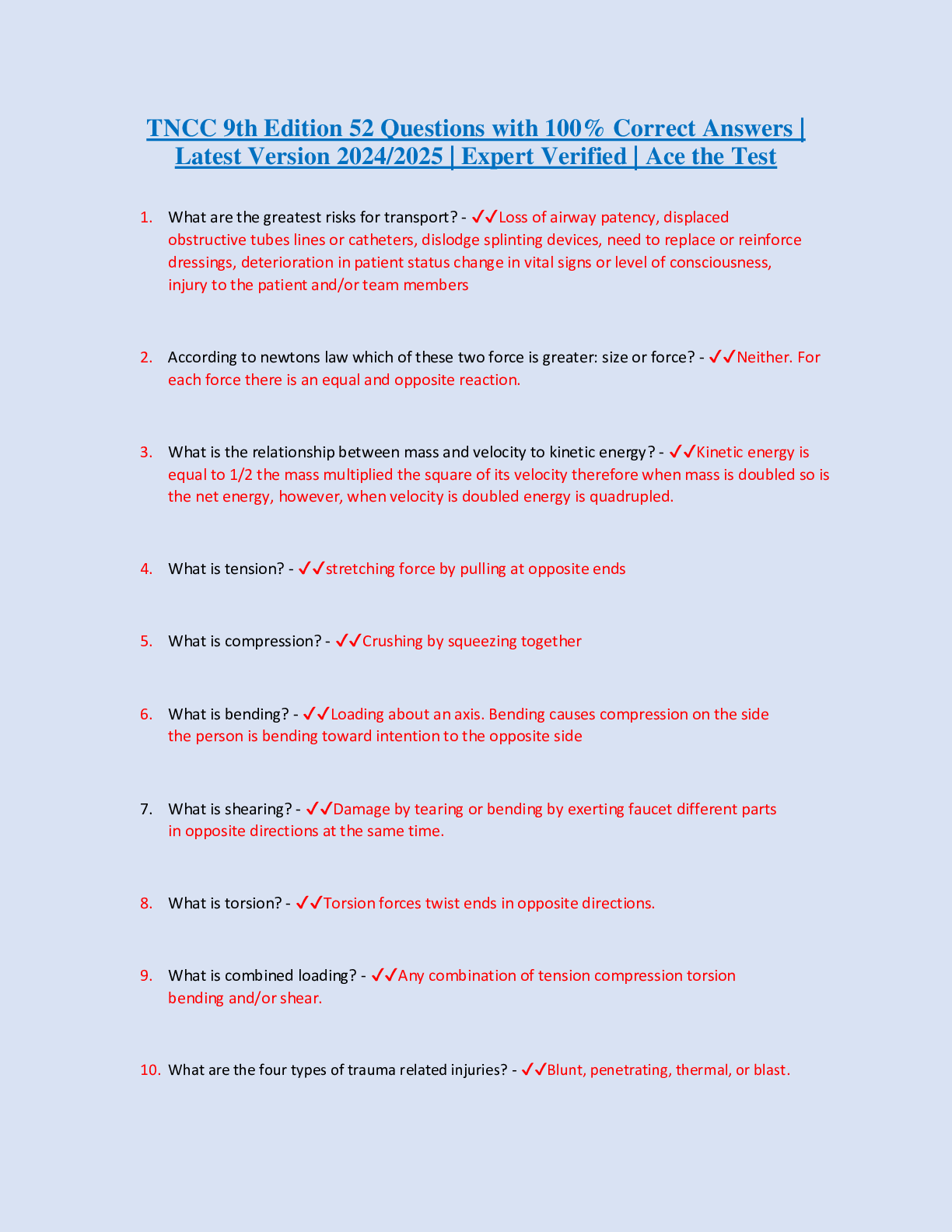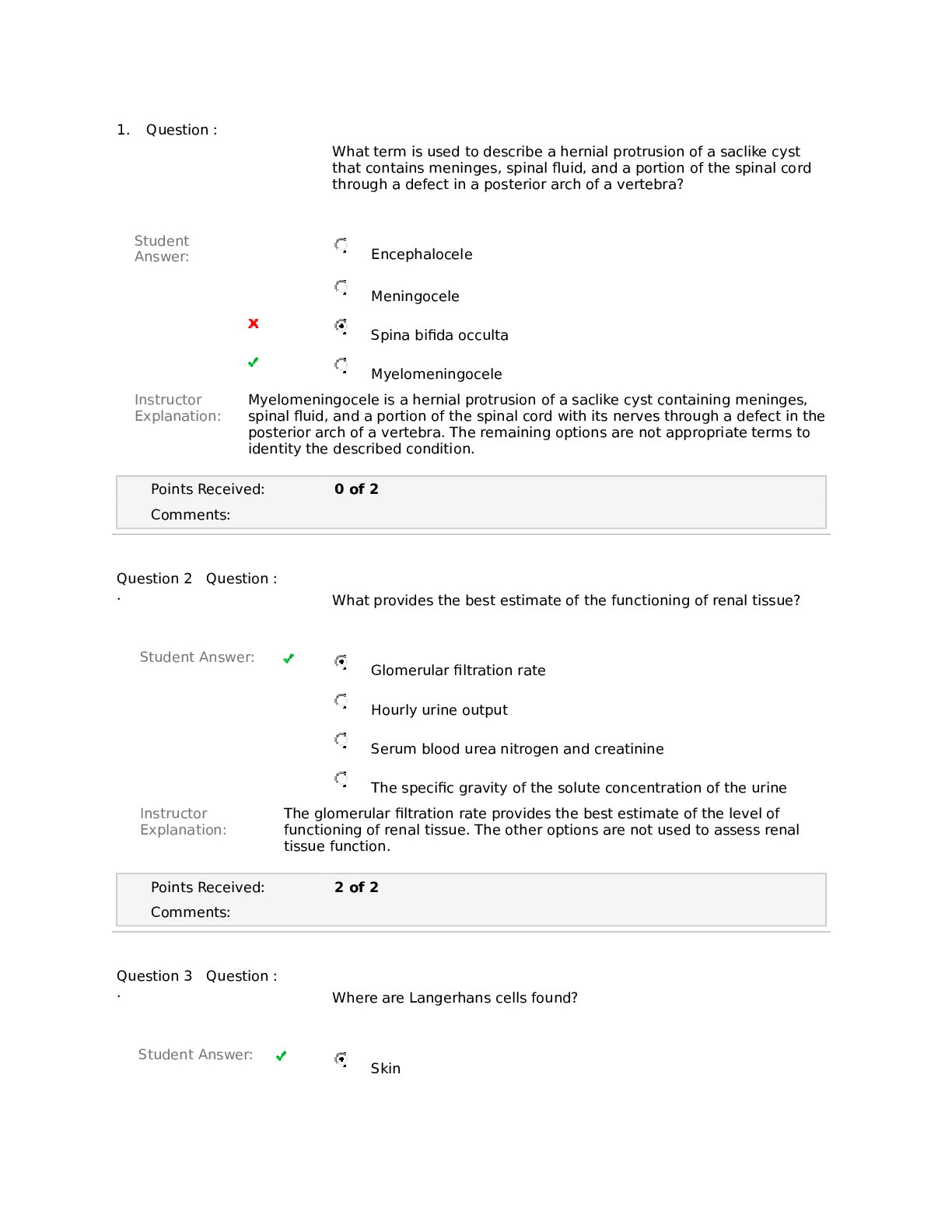South University, Savannah NSG NSG 6420 Quiz 2
Document Content and Description Below
NSG6420 QUIZ 2 1. Question :An 86-year-old patient who wears a hearing aid complains of poor hearing in the affected ear. In addition to possible hearing aid malfunction, this condition is often due... to: a) Acoustic neuroma b) Cerumen impaction c) Otitis media d) Ménière’s disease Question 2.In examination of the nose, the clinician observes gray, pale mucous membranes with clear, serous discharge. This is most likely indicative of: a) Bacterial sinusitis b) Allergic rhinitis c) Drug abuse d) Skull fracture Question 3. A 45 year old patient presents with ‘sore throat’ and fever for one week. After a quick strep screen you determine the patient has Strep throat. You know that streptococcal pharyngitis should be treated with antibiotics to prevent complications and to shorten the course of disease. Which of the following antibiotics should be considered when a patient is allergic to Penicillin? a) Amoxicillin b) EES (erythromycin) c) Bicillin L-A d) Dicloxacillin Question 4.Presbycusis is the hearing impairment that is associated with: a) Physiologic aging b) Ménière’s disease c) Cerumen impaction d) Herpes zoster Question 5.Epistaxis can be a symptom of: a) Over-anticoagulation b) Hematologic malignancy c) Cocaine abuse d) All of the above Question 6.Your patient has been using chewing tobacco for 10 years. On physical examination, you observe a white ulceration surrounded by erythematous base on the side of his tongue. The clinician should recognize that very often this is: a) Malignant melanoma b) Squamous cell carcinoma c) Aphthous ulceration d) Behcet’s syndrome Question 7.A 26 year old patient presents with cough and general malaise for 3 days. They note that their eyes have been watering clear fluid and a ‘runny nose’ since yesterday. They note they ‘feel miserable’ and demand something to make them feel better. What would be the best first plan of treatment? a) Saline nasal spray for congestion and acetaminophen as needed for pain. b) Z-pack (azithromycin) for infection and Cromolyn nasal for congestion c) Hydrococone/acetaminophen as needed for pain and Guaifensin for congestion d) Cephalexin for infection and Cromolyn ophthalmic for congestion Question 8.Which of the following findings should trigger an urgent referral to a cardiologist or neurologist? a) History of bright flash of light followed by significantly blurred vision b) History of transient and painless monocular loss of vision c) History of monocular severe eye pain, blurred vision, and ciliary flush d) All of the above Question 9.Dizziness that is described as "lightheaded" or, "like I'm going to faint," is usually caused by inadequate cerebral perfusion and is classified as? a) Presyncope b) Disequilibrium c) Vertigo d) Syncope Question 10.It is important to not dilate the eye if ____ is suspected. a) Cataract b) Macular degeneration c) Acute closed-angle glaucoma d) Chronic open-angle glaucoma Question 11.Mr. GC presents to the clinic with nausea and vomiting for 2 days, prior to that time he reports occasional ‘dizziness’ that got better with change in position. He denies a recent history of URI or any history of headaches or migraines. What would the most likely diagnosis be? a) Vestibular neruitis b) Benign paroxysmal positional vertigo c) Vestibular migraine d) Benign hypertensive central vertigo Question 12.Which of the following patients with vertigo would require neurologic imaging? a) A 68-year-old woman with a history of hypertension and sudden acute onset constant vertigo. She has right nystagmus that changes direction with gaze and that does not disappear when she focuses. b)45-year-old man with recurrent episodes of brief intense vertigo every time he turns his head rapidly. He has no other neurologic signs or symptoms. He has a positive Dix-Hallpike maneuver. c) A 66-year-old man with recurrent episodes of vertigo associated with tinnitus and hearing loss. His head thrust test is positive. c)A 28-year-old otherwise well woman with new onset constant vertigo with no other neurologic symptoms. On physical exam, she has unidirectional nystagmus that disappears when her gaze is fixed. Question 13.A patient presents with eye redness, scant discharge, and a gritty sensation. Your examination reveals the palpable preauricular nodes, which are most likely with: a) Bacterial conjunctivitis b) Allergic conjunctivitis c) Chemical conjunctivitis d) Viral conjunctivitis Question 14.In assessing the eyes, which of the following is considered a “red flag” finding when associated with eye redness? a) History of prior red-eye episodes b) Grossly visible corneal defect c) Exophthalmos d) Photophobia Question 15. A 64-year-old male presents with erythema of the sclera, tearing, and bilateral pruritus of the eyes. The symptoms occur intermittently throughout the year and he has associated clear nasal discharge. Which of the following is most likely because of the inflammation? a) Bacterium b) Allergen c) Virus d) Fungi Question 16.Patients that have atopic disorders are mediated by the production of Immunoglobulin E (IgE) will have histamine stimulated as an immediate phase response. This release of histamine results in which of the following? a) Sinus pain, increased vascular permeability, and bronchodilation b) Bronchospasm, vascular permeability, and vasodilatation c) Contraction of smooth muscle, decreased vascular permeability, and vasoconstriction d) Vasodilatation, bronchodilation, and increased vascular permeability Question 17.You have a patient complaining of vertigo and want to know what could be the cause. Knowing there are many causes for vertigo, you question the length of time the sensation lasts. She tells you several hours to days and is accompanied by tinnitus and hearing loss. You suspect which of the following conditions? a) Ménière’s disease b) Benign paroxysmal positional vertigo c) Transient ischemic attack (TIA) d) Migraine Question 18.In examining the mouth of an older adult with a history of smoking, the nurse practitioner finds a suspicious oral lesion. The patient has been referred for a biopsy to be sent for pathology. Which is the most common oral precancerous lesion? a) Fictional keratosis b) Keratoacanthoma c) Lichen planus d) Leukoplakia Question 19.Rheumatic heart disease is a complication that can arise from which type of infection? a) Epstein-Barr virus b) Diphtheria c) Group A beta hemolytic streptococcus d) Streptococcus pneumoniae Question 20.A patient complains of fever, fatigue, and pharyngitis. On physical examination there is pronounced cervical lymphadenopathy. Which of the following diagnostic tests should be considered? a) Mono spot b) Strep test c) Throat culture d) All of the above [Show More]
Last updated: 1 year ago
Preview 1 out of 15 pages
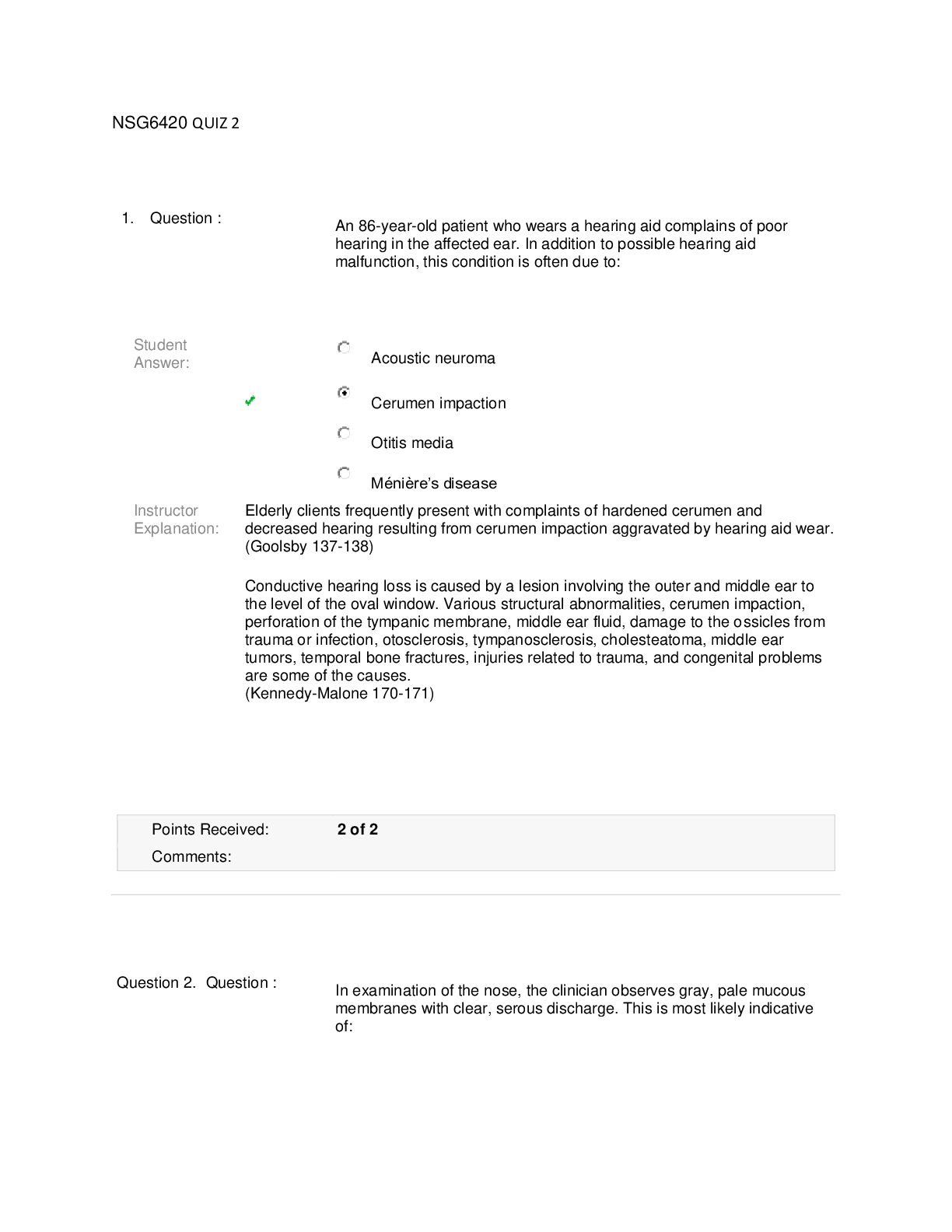
Reviews( 0 )
Document information
Connected school, study & course
About the document
Uploaded On
Aug 31, 2019
Number of pages
15
Written in
Additional information
This document has been written for:
Uploaded
Aug 31, 2019
Downloads
0
Views
86


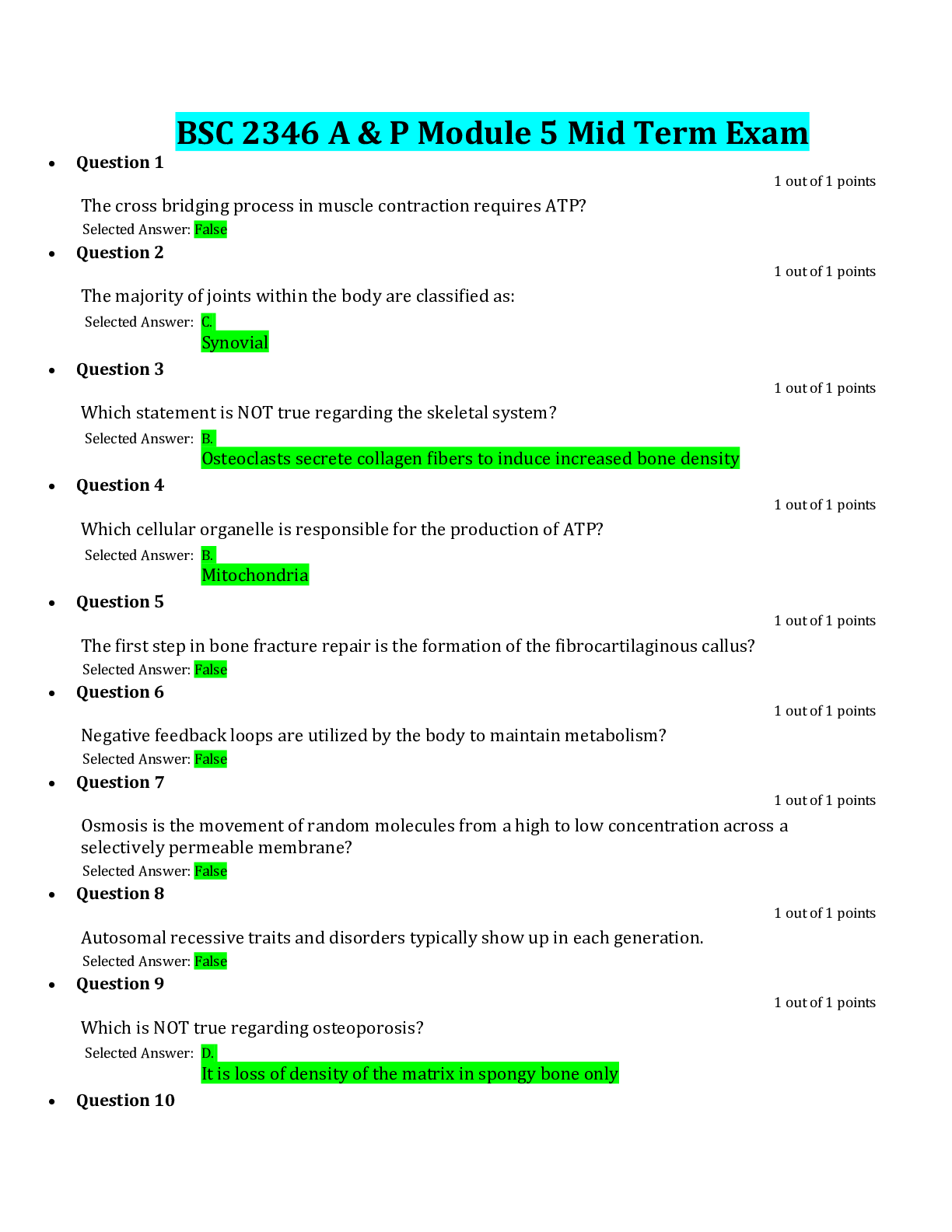
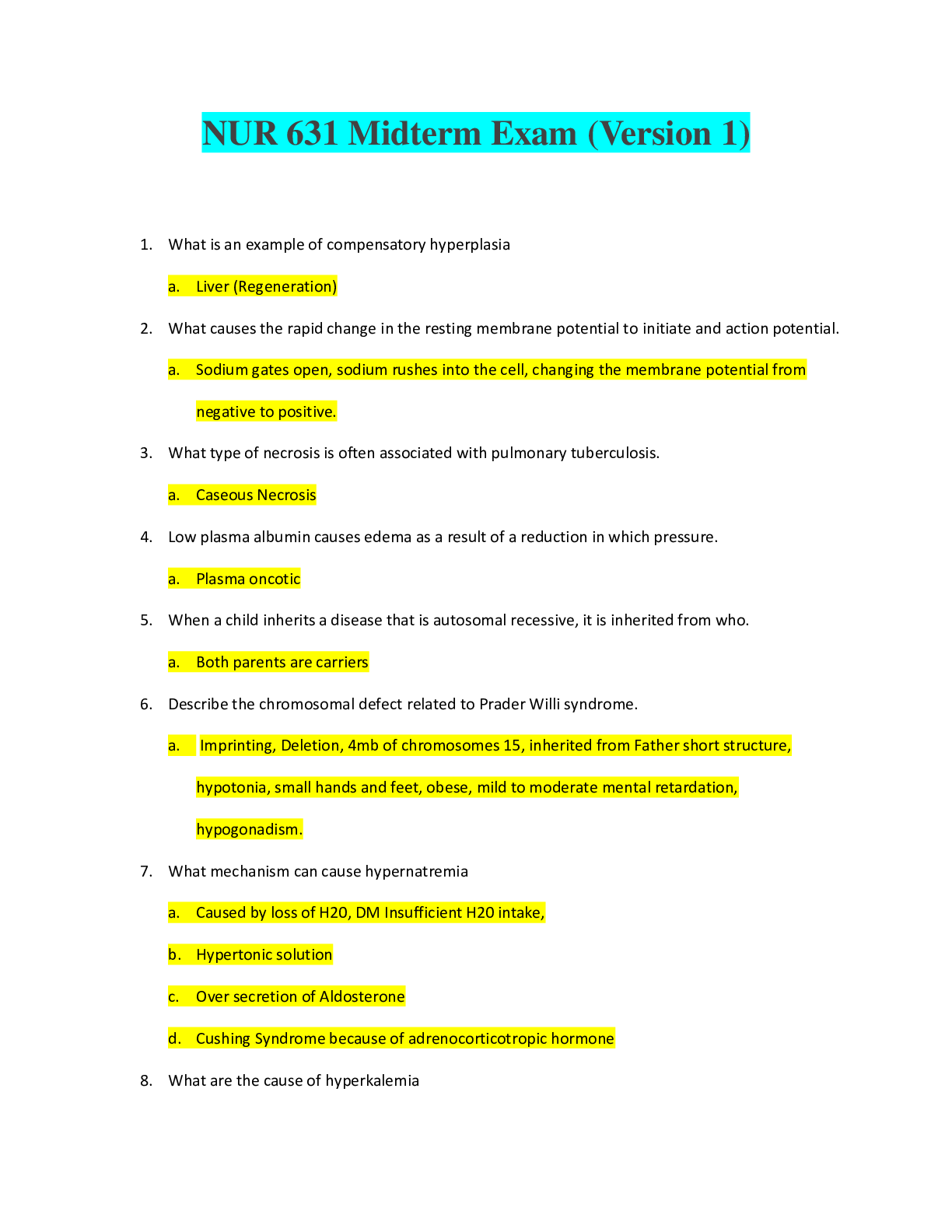
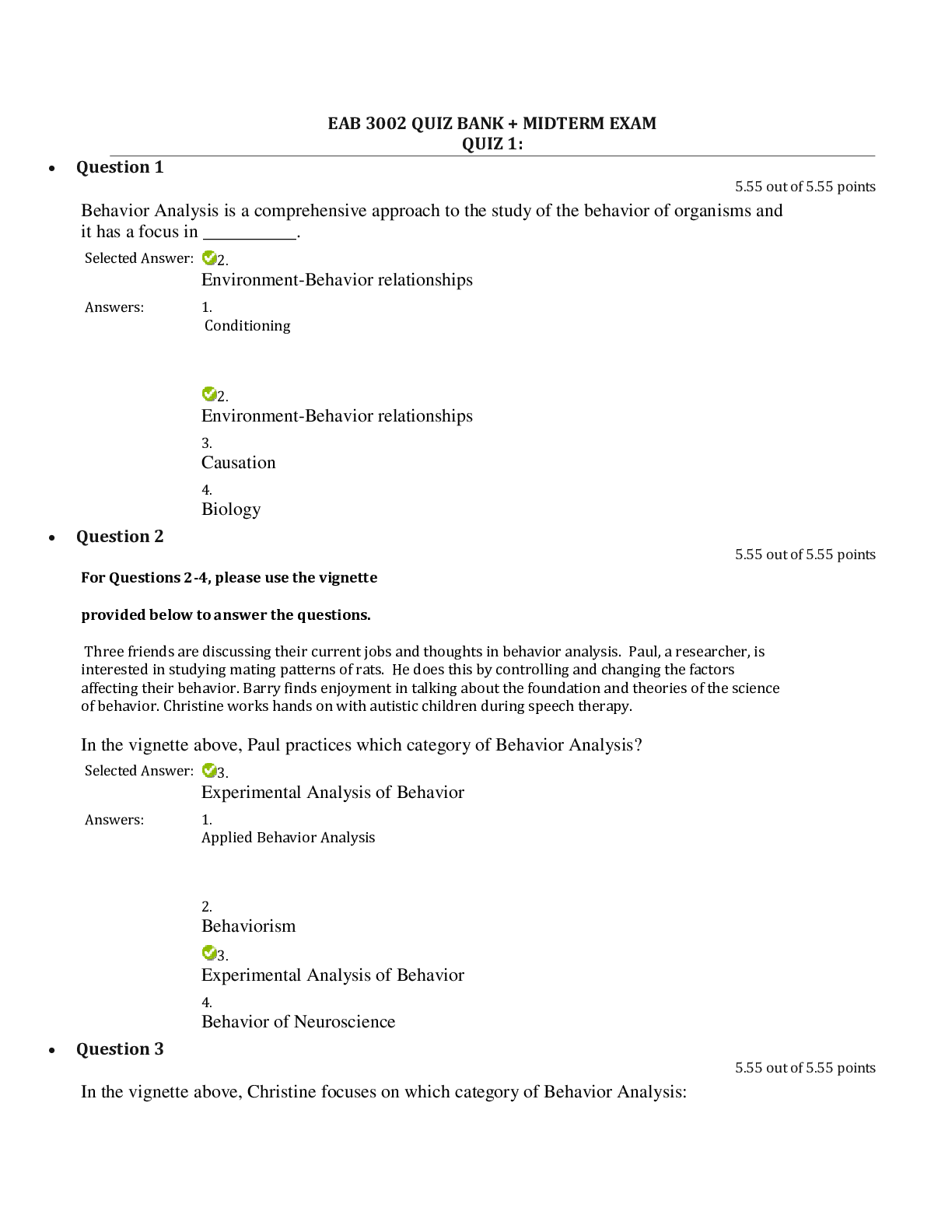
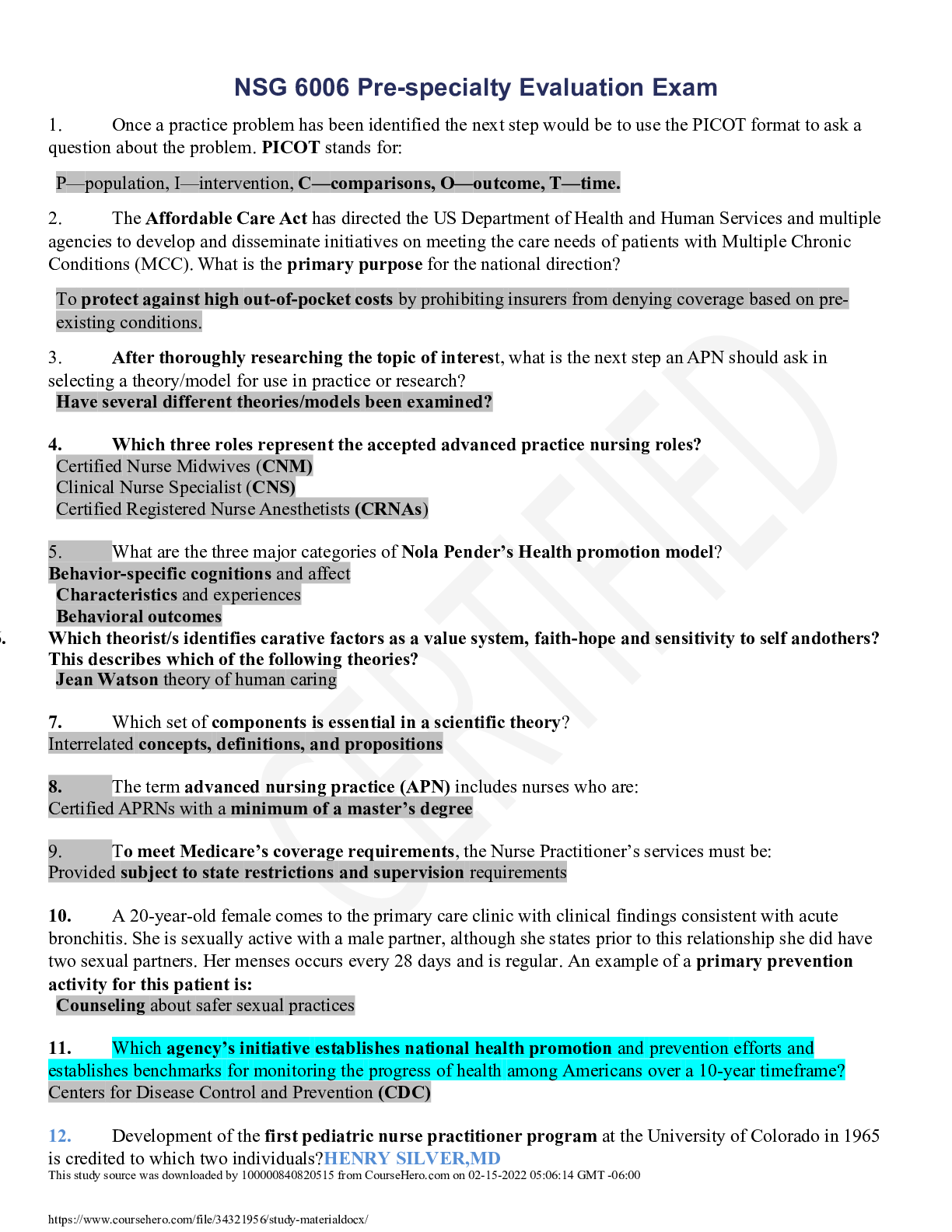
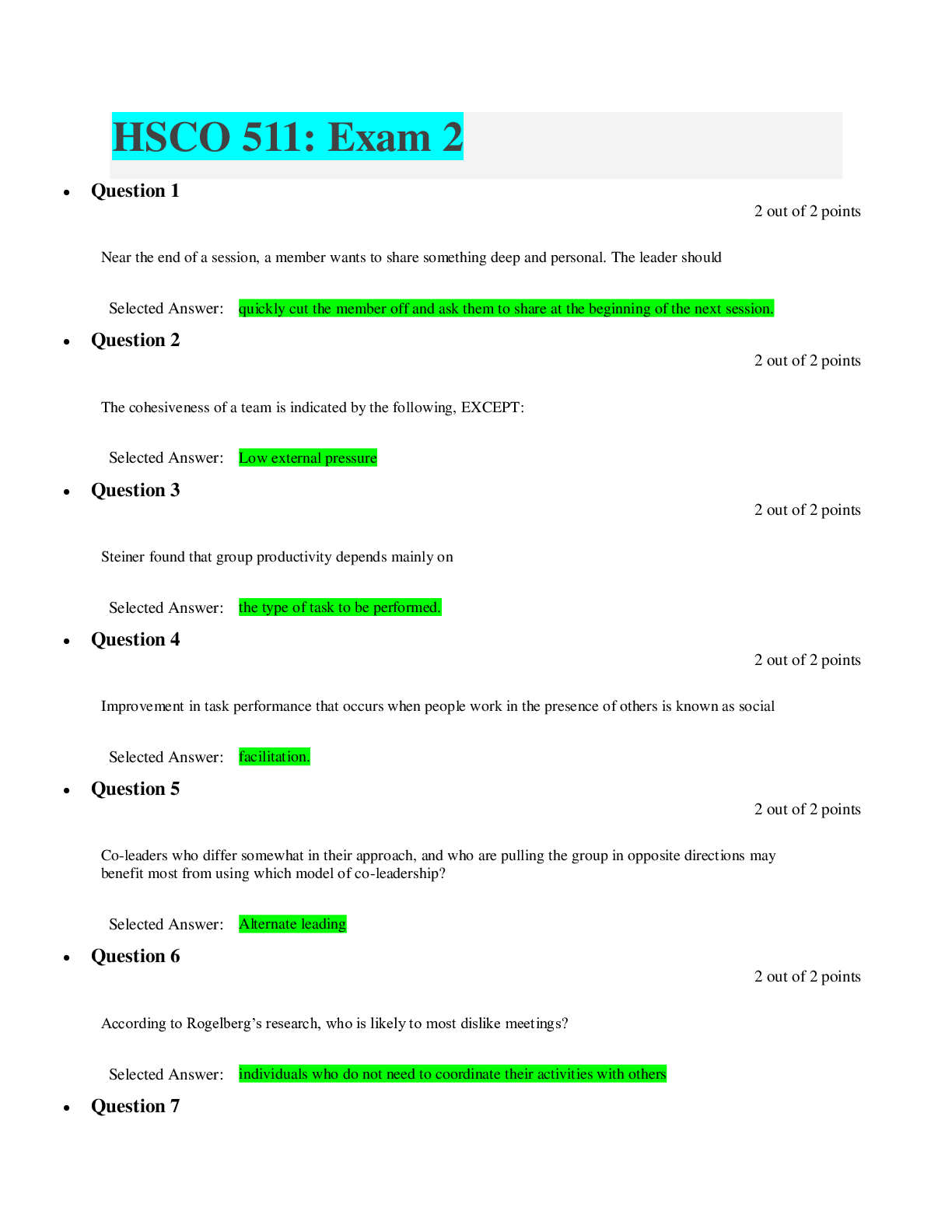
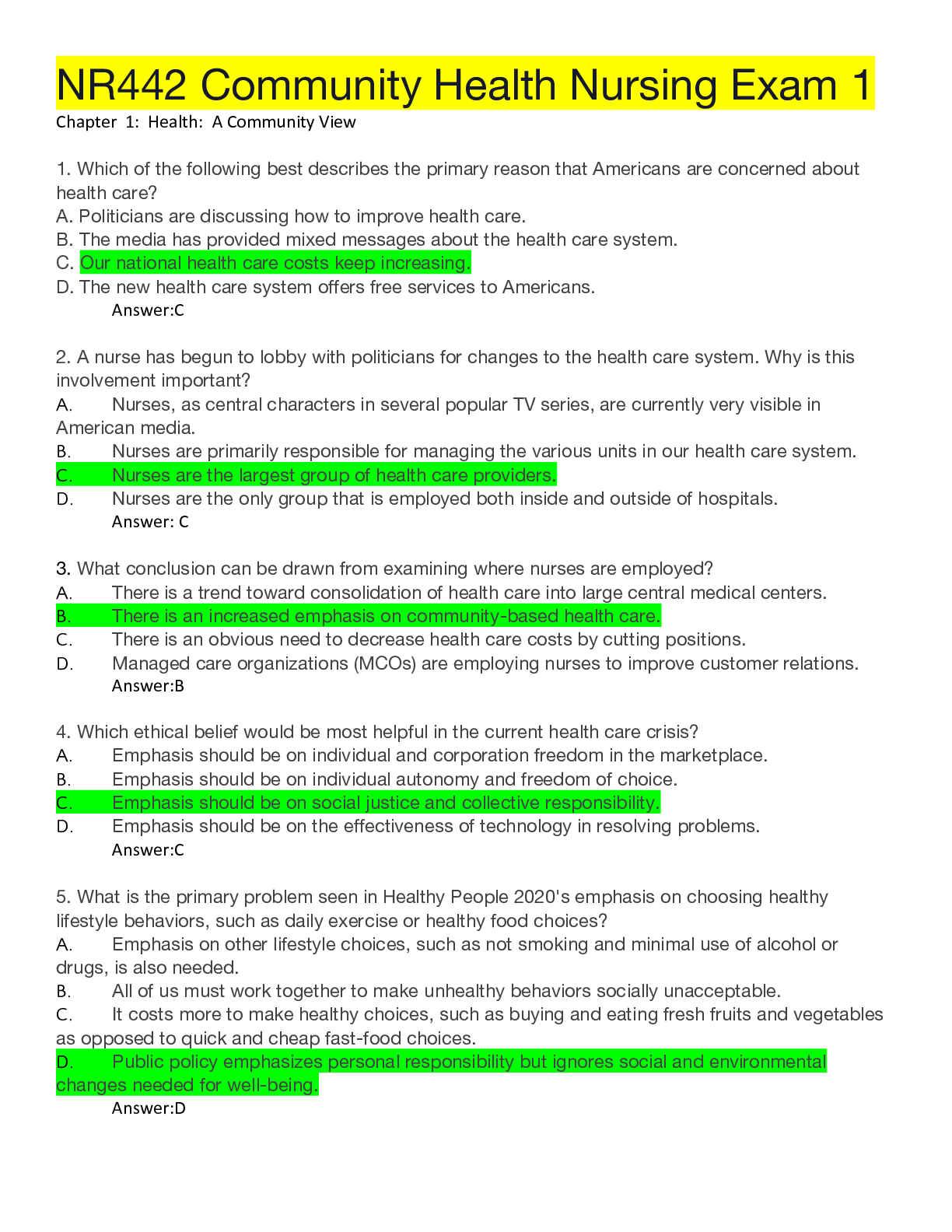
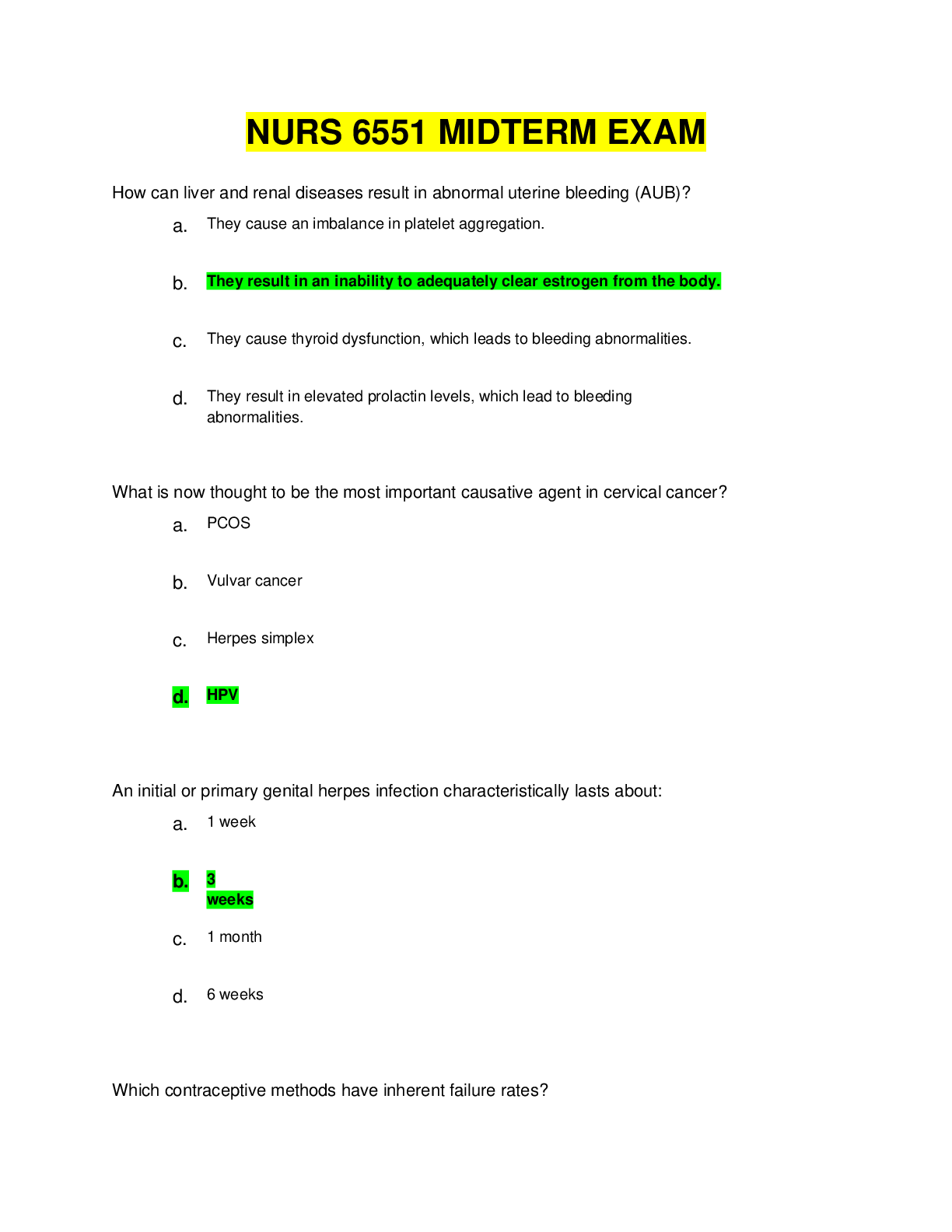
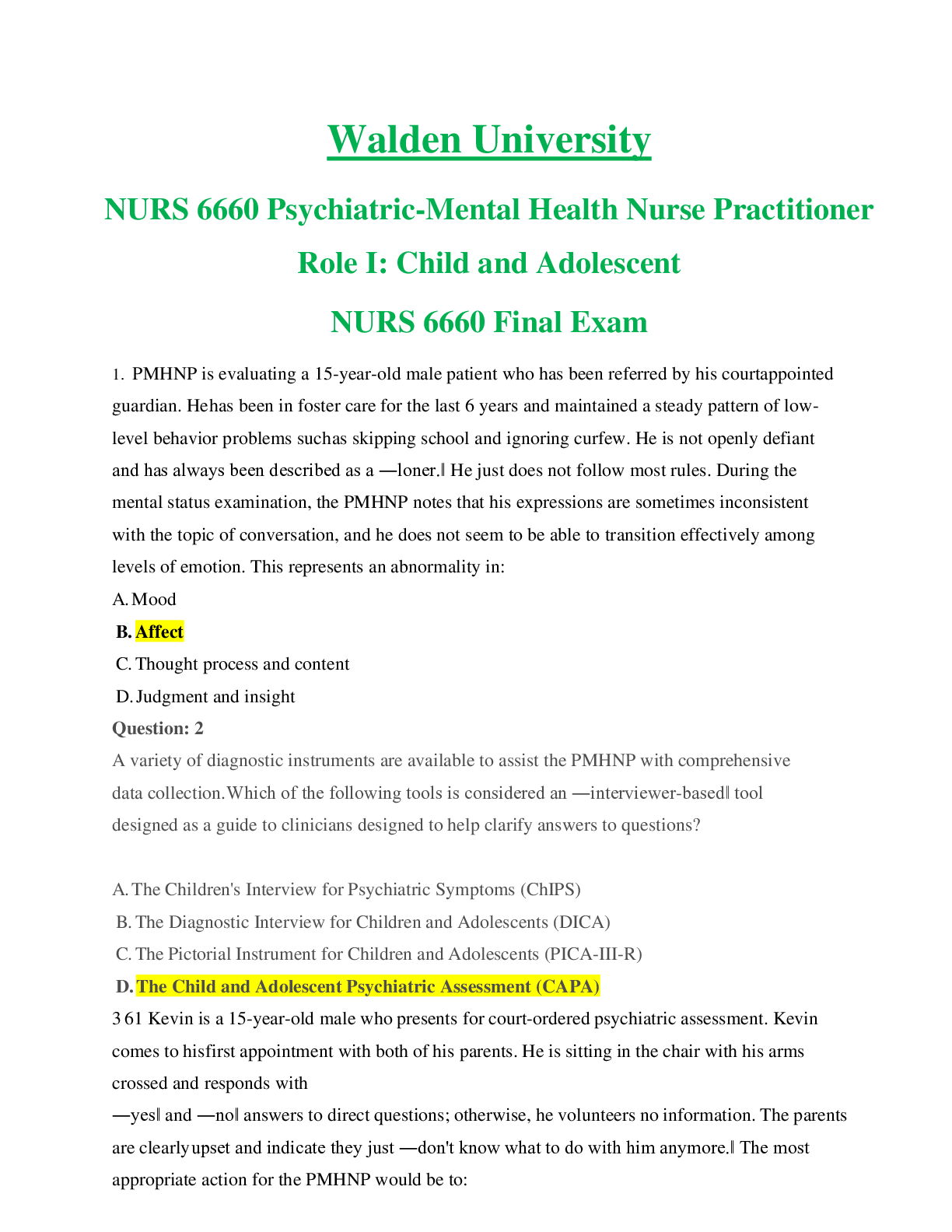
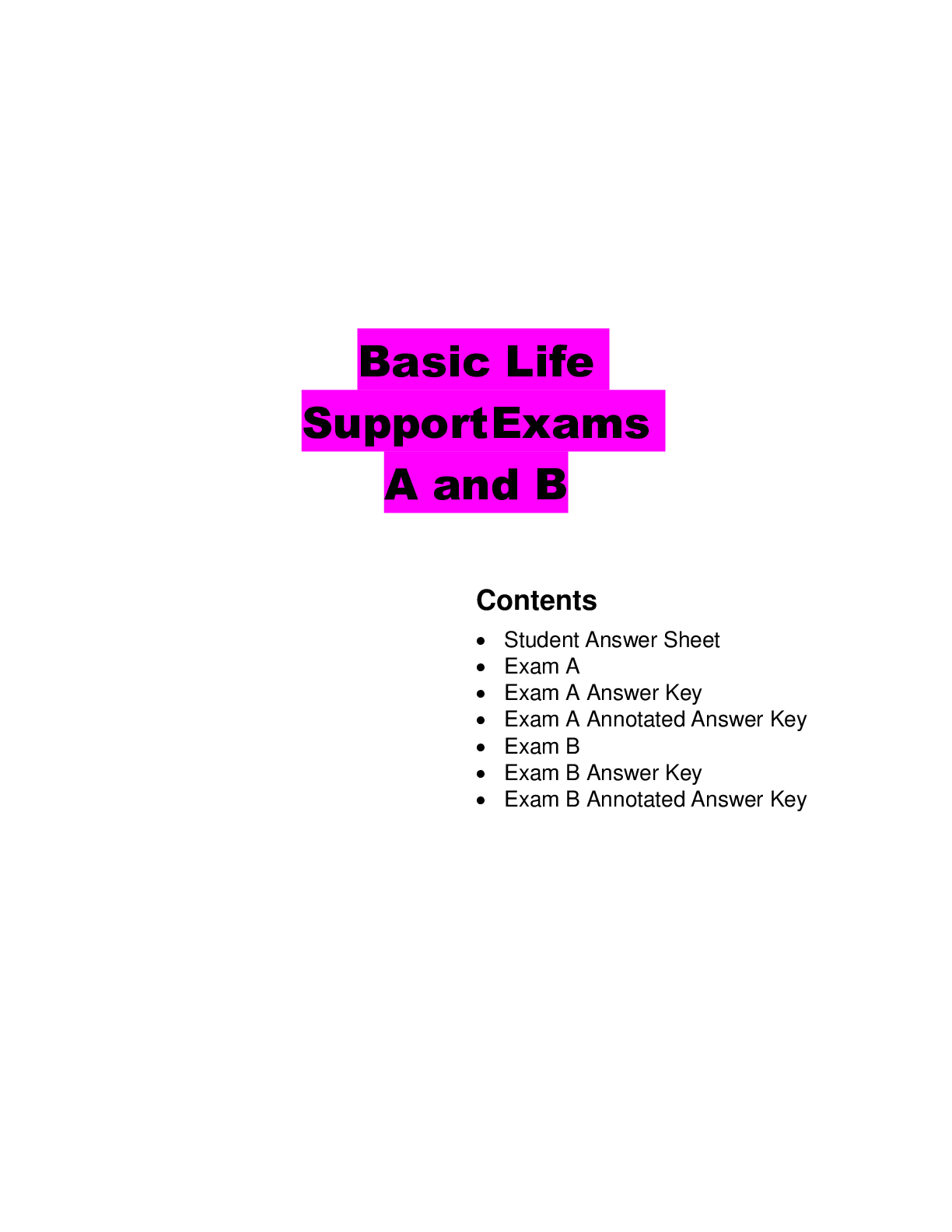
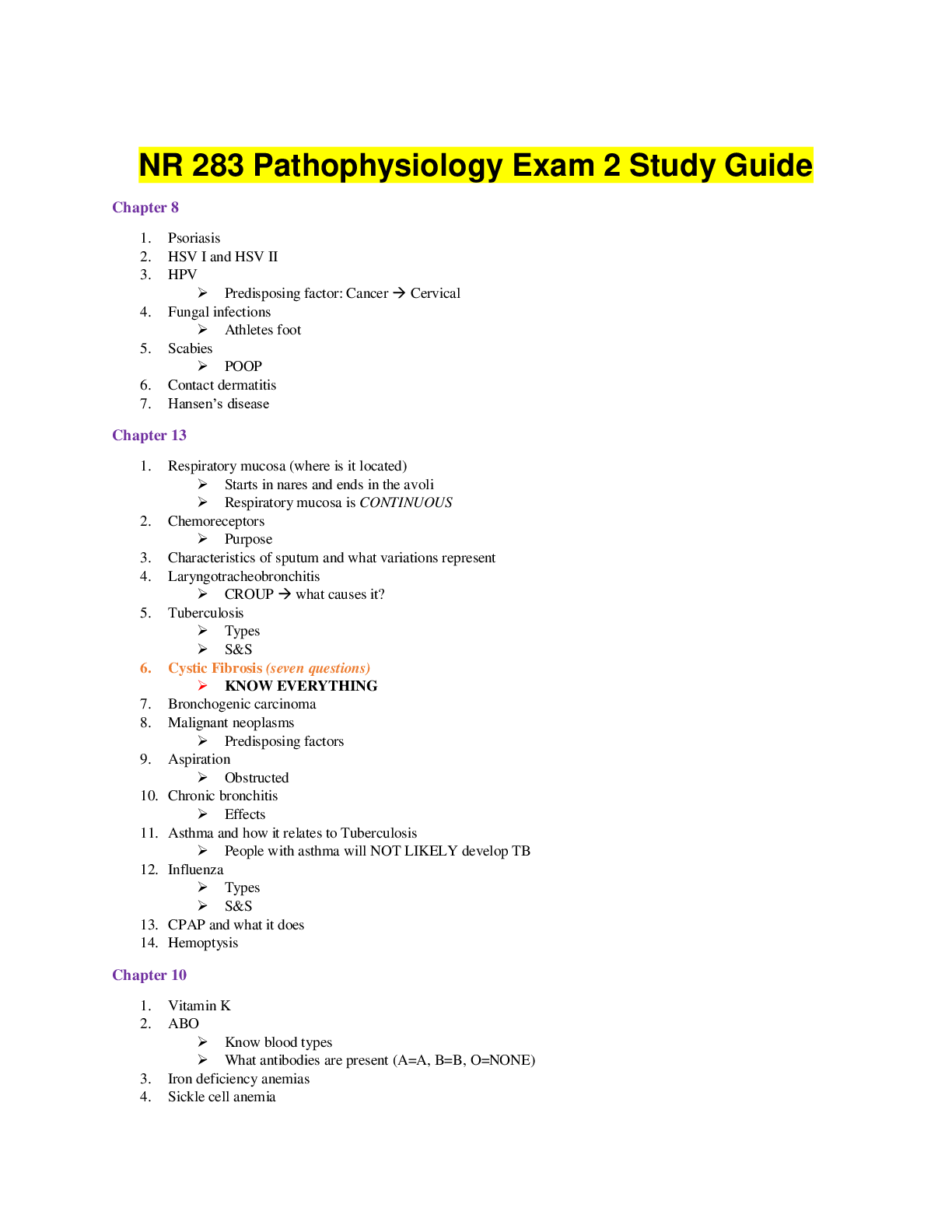
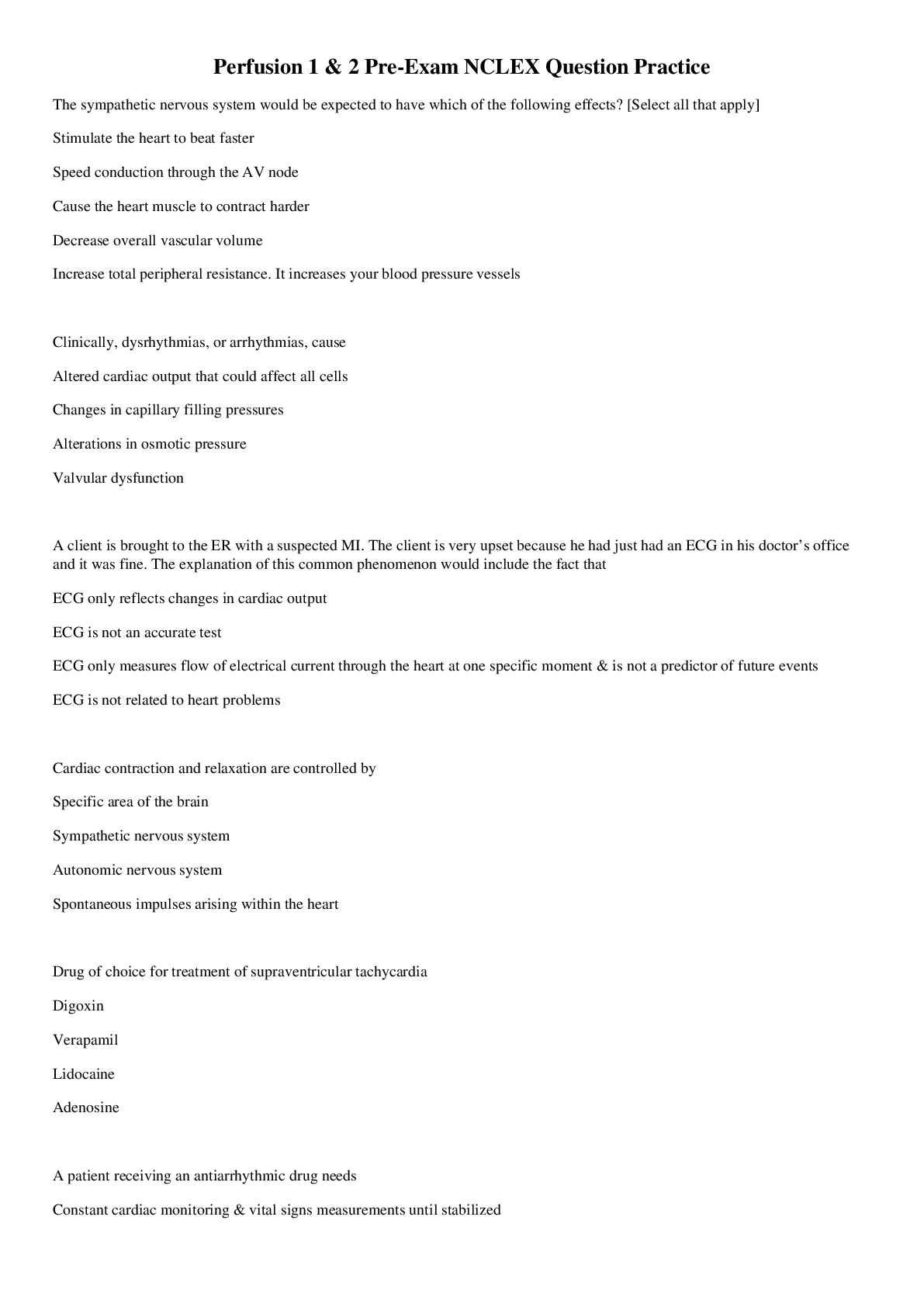
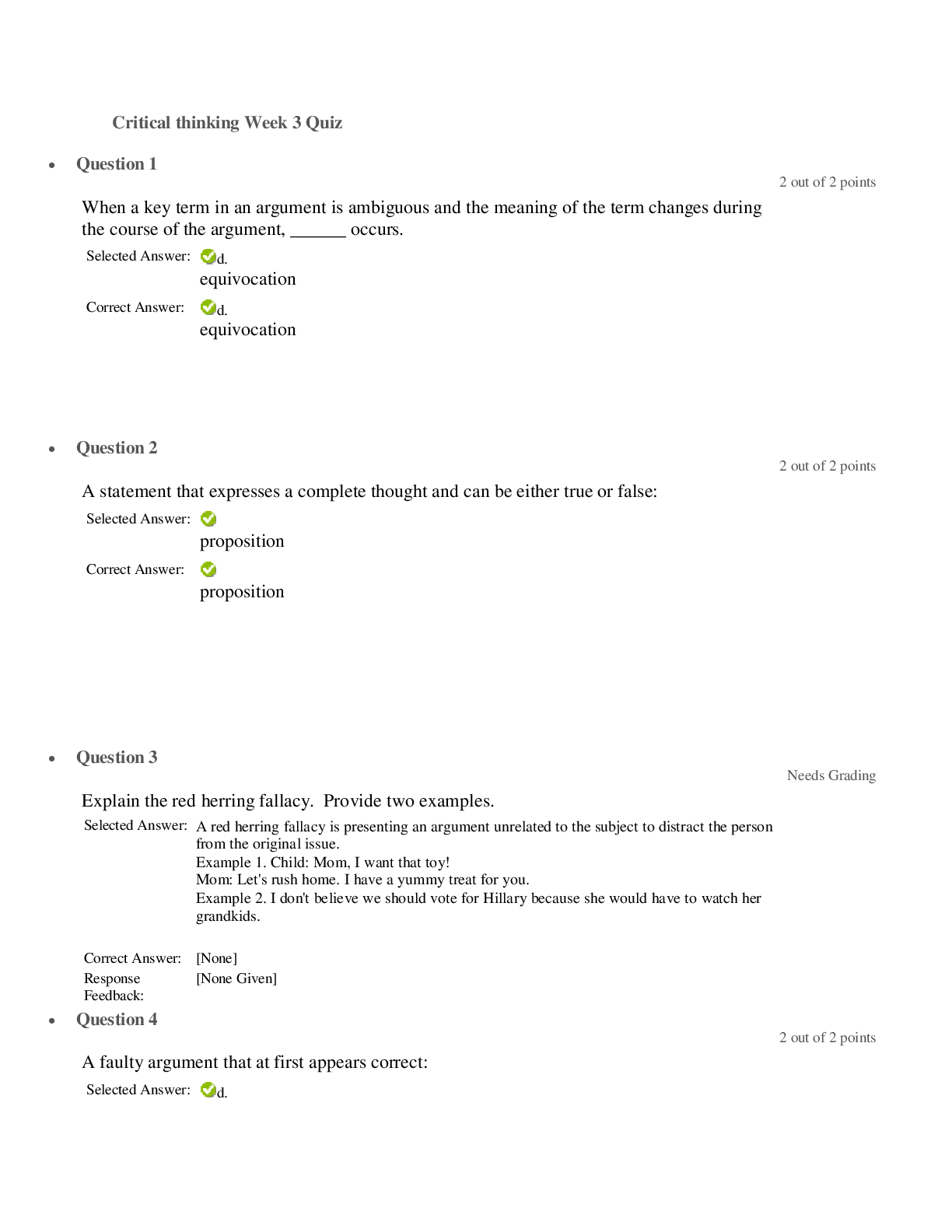


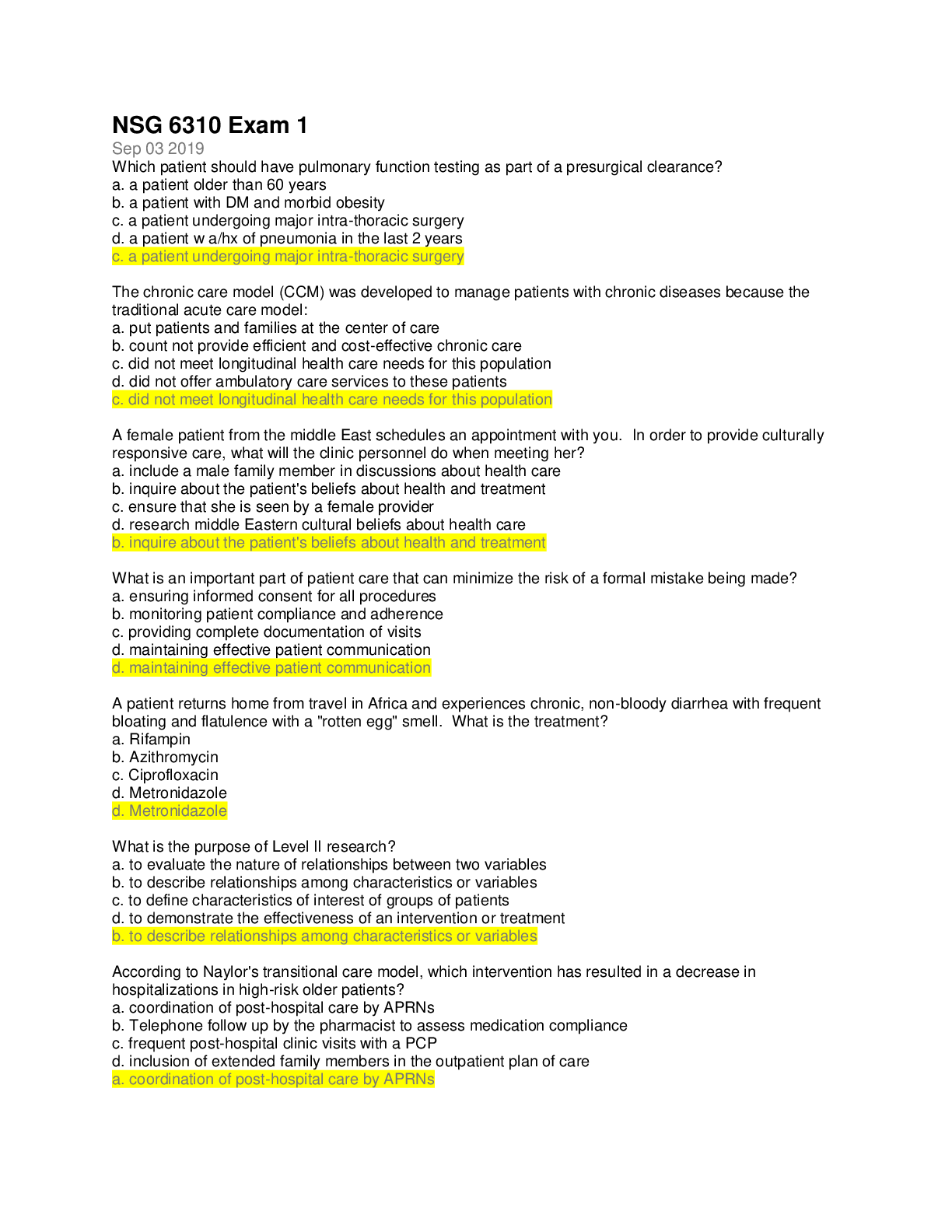

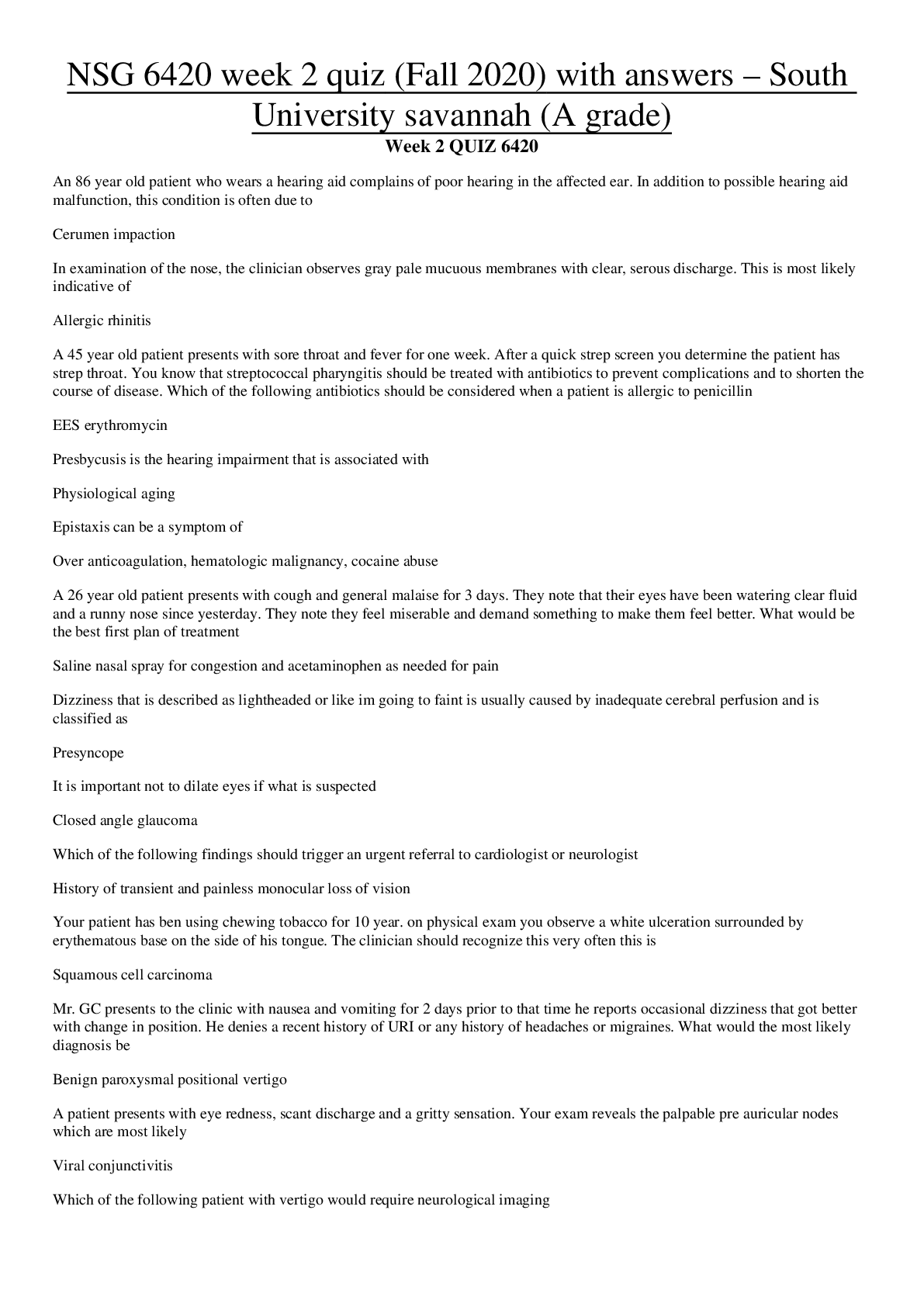
 (1).png)
.png)
 (1).png)
.png)

